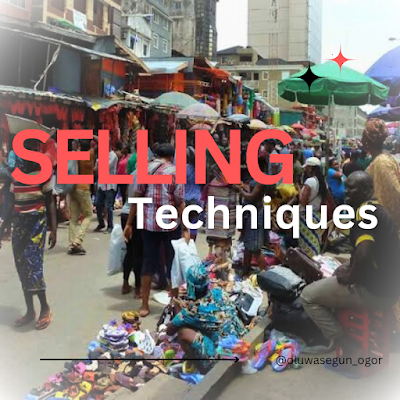Selling to Remote Communities: A Case Study of the Nigerian Market
Introduction
Selling to remote communities in Nigeria presents unique challenges and opportunities. With a diverse geography and varying levels of infrastructure, businesses need to adapt their strategies to effectively reach and serve these areas. This approach can help tap into untapped markets and build strong customer relationships in less accessible regions.
1. Understanding the Remote Community Landscape
Geographic Diversity: Nigeria’s remote areas include rural villages, remote towns, and underserved regions, each with its own characteristics and needs. For example, the northern regions may have different needs compared to the southern or southeastern parts.
Infrastructure Challenges: Many remote communities face challenges such as poor road conditions, limited access to electricity, and inadequate internet connectivity. Understanding these challenges is crucial for designing effective sales strategies.
2. Tailoring Your Products and Services
Local Needs and Preferences: Customize your product offerings to meet the specific needs and preferences of remote communities. For instance, if selling agricultural products, offer tools and seeds suited to local farming practices.
Affordable and Practical Solutions: Provide products that are affordable and practical for remote communities. This might include durable goods that can withstand local conditions or cost-effective solutions that fit within local budgets.
3. Leveraging Local Partnerships
Collaborate with Local Distributors: Partner with local distributors or traders who have established relationships and knowledge of the community. They can help bridge the gap between your business and remote customers.
Engage Community Leaders: Work with local leaders or influencers to gain trust and facilitate market entry. Their endorsement can enhance your credibility and acceptance within the community.
4. Developing Innovative Distribution Channels
Mobile and Pop-Up Shops: Use mobile or pop-up shops to reach remote areas. These can be vehicles or temporary setups that travel to different locations, bringing your products directly to the community.
Local Agents and Sales Representatives: Employ local agents or sales representatives who are familiar with the region and can effectively manage sales and customer service in remote areas.
5. Adapting Marketing and Communication Strategies
Localized Marketing: Create marketing materials and messages that resonate with local cultures and languages. Use local dialects and culturally relevant imagery to make your brand more relatable.
Community Engagement: Engage with the community through local events, fairs, or sponsorships. Demonstrating commitment to the community can build goodwill and increase brand visibility.
6. Overcoming Logistical Challenges
Reliable Transport Solutions: Invest in reliable transportation to ensure timely delivery of products to remote areas. This might involve using rugged vehicles suited for difficult terrain.
Effective Inventory Management: Develop a robust inventory management system to ensure adequate stock levels and minimize supply chain disruptions.
7. Providing Excellent Customer Support
Accessible Support Channels: Offer accessible customer support through multiple channels, including phone, SMS, or local agents. Ensure that customers can easily reach out for assistance or inquiries.
Training and Education: Provide training or educational resources to help customers understand and use your products effectively. This can be done through workshops or local demonstrations.
(Case Study: Example from Nigeria)
Example: Unilever’s Rural Distribution Strategy
Unilever has successfully reached remote communities in Nigeria by implementing a rural distribution strategy. They use a network of local distributors and sales agents who understand the local market. Unilever also deploys mobile vans to deliver products directly to remote areas, ensuring that even hard-to-reach communities have access to their goods. Their approach includes adapting product sizes and packaging to fit local needs and offering affordable pricing to match the economic conditions of these communities.
Conclusion
Selling to remote communities in Nigeria requires a tailored approach that considers local needs, infrastructure challenges, and effective distribution strategies. By understanding the unique characteristics of these areas, customizing products and services, leveraging local partnerships, and adapting marketing and logistical strategies, businesses can successfully enter and thrive in remote markets. This approach not only expands market reach but also builds strong relationships with underserved communities, contributing to long-term success and growth.











Comments